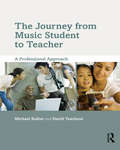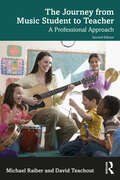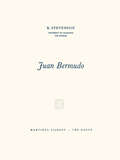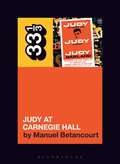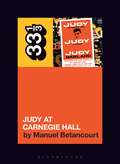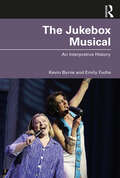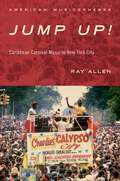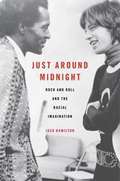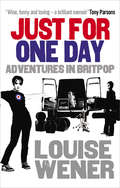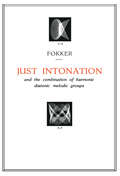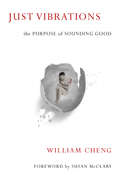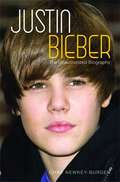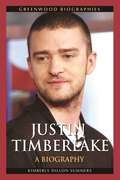- Table View
- List View
The Journey from Music Student to Teacher: A Professional Approach
by Michael Raiber David TeachoutFrom Music Student to Teacher: A Professional Approach helps prospective music educators begin their transition from music student to professional music teacher. The text uniquely works to build upon the individual’s personal experience to enhance their approach to the profession. The authors help students first recognize their personal perspectives of the profession, and uncover the assumptions they have concerning learning and teaching. They are then prepared to make mindful informed decisions about their professional education. The topics and activities are deliberately organized to help the reader think as a professional rather than a student. Divided into three parts: (a) discovery of self, (b) discovery of teaching, and (c) discovery of learners; The three parts address the primary stages of teacher development. Within each part readers are connected to the theoretical foundations of the text and the process of becoming an insider to the profession.From Music Student to Teacher: A Professional Approach incorporates online resources and tools that are already familiar to students in their world of networking through social media Features include: Social networking activities to aid self-reflection and discussion ‘Connecting to the Profession’ sections that provide resources which help to bridge the gap between theory and practice. Discussion and glossary that provide a solid base in professional terminology An integrated companion website, including videos of teaching practice and further activities for self-reflection, plus instructor material. Michael A. Raiber is Professor of Music Education at Oklahoma City University David J. Teachout is Associate Professor and Department Head of Music Education at the University of North Carolina Greensboro.
The Journey from Music Student to Teacher: A Professional Approach
by Michael Raiber David TeachoutFrom Music Student to Teacher: A Professional Approach helps prospective music educators begin their transition from music student to professional music teacher. The text uniquely works to build upon the individual’s personal experience to enhance their approach to the profession. The authors help students first recognize their personal perspectives of the profession, and uncover the assumptions they have concerning learning and teaching. They are then prepared to make mindful informed decisions about their professional education. The topics and activities are deliberately organized to help the reader think as a professional rather than a student. Divided into three parts: (a) discovery of self, (b) discovery of teaching, and (c) discovery of learners; The three parts address the primary stages of teacher development. Within each part readers are connected to the theoretical foundations of the text and the process of becoming an insider to the profession.From Music Student to Teacher: A Professional Approach incorporates online resources and tools that are already familiar to students in their world of networking through social media Features include: Social networking activities to aid self-reflection and discussion ‘Connecting to the Profession’ sections that provide resources which help to bridge the gap between theory and practice. Discussion and glossary that provide a solid base in professional terminology An integrated companion website, including videos of teaching practice and further activities for self-reflection, plus instructor material. Michael A. Raiber is Professor of Music Education at Oklahoma City University David J. Teachout is Associate Professor and Department Head of Music Education at the University of North Carolina Greensboro.
The Journey from Music Student to Teacher: A Professional Approach
by Michael Raiber David TeachoutThe Journey from Music Student to Teacher: A Professional Approach, Second Edition helps prospective educators transition from music student to professional music teacher. This textbook acknowledges that students must first reconcile their assumptions about learning and teaching before they can make thoughtful, informed decisions about their own professional education. Building upon personal experience is essential to an enhanced approach to the profession, and the topics and activities presented here guide readers to think not as students but as professionals, addressing the primary stages of teacher development. In three parts—Discovery of Self, Discovery of Teaching, and Discovery of Student Learning—the authors connect readers to theoretical foundations and the processes of becoming an insider to the profession. This updated Second Edition includes: Integration of the 2014 National Core Arts Standards Discussion of NAfMEs Model Cornerstone Assessments Explorations of issues of equity, access, and inclusion for marginalized populations and new examples of culturally responsive pedagogy Added coverage of innovative practices including popular music, technology for autonomous music-making, songwriting, and composition Streamlined discussion of learning theory, focusing on the basic foundations of behaviorism, cognitivism, and constructivism The accompanying companion website at www.routledge.com/cw/raiber provides revised and updated "Connecting to the Profession" features that help enhance students’ understanding of the ideas presented in the text, links to videos of K-12 music teaching and interviews with teachers, and additional resources for instructors. Featuring networking activities to aid in self-reflection, a glossary of terms, and a wealth of online resources and tools, The Journey from Music Student to Teacher is the culmination of more than 25 years of experience in secondary music classrooms, providing a framework for establishing professional role identity among preservice music educators during their introduction to the field.
The Journey from Music Student to Teacher: A Professional Approach
by Michael Raiber David TeachoutThe Journey from Music Student to Teacher: A Professional Approach, Second Edition helps prospective educators transition from music student to professional music teacher. This textbook acknowledges that students must first reconcile their assumptions about learning and teaching before they can make thoughtful, informed decisions about their own professional education. Building upon personal experience is essential to an enhanced approach to the profession, and the topics and activities presented here guide readers to think not as students but as professionals, addressing the primary stages of teacher development. In three parts—Discovery of Self, Discovery of Teaching, and Discovery of Student Learning—the authors connect readers to theoretical foundations and the processes of becoming an insider to the profession. This updated Second Edition includes: Integration of the 2014 National Core Arts Standards Discussion of NAfMEs Model Cornerstone Assessments Explorations of issues of equity, access, and inclusion for marginalized populations and new examples of culturally responsive pedagogy Added coverage of innovative practices including popular music, technology for autonomous music-making, songwriting, and composition Streamlined discussion of learning theory, focusing on the basic foundations of behaviorism, cognitivism, and constructivism The accompanying companion website at www.routledge.com/cw/raiber provides revised and updated "Connecting to the Profession" features that help enhance students’ understanding of the ideas presented in the text, links to videos of K-12 music teaching and interviews with teachers, and additional resources for instructors. Featuring networking activities to aid in self-reflection, a glossary of terms, and a wealth of online resources and tools, The Journey from Music Student to Teacher is the culmination of more than 25 years of experience in secondary music classrooms, providing a framework for establishing professional role identity among preservice music educators during their introduction to the field.
Journeys Through Galant Expositions
by L. Poundie BursteinEver since the nineteenth century, descriptions of musical form have tended to rely heavily on architectonic analogies. In contrast, earlier discussions more often invoked the metaphor of a journey to describe the structure of a composition. In Journeys Through Galant Expositions, author L. Poundie Burstein encourages readers to view the form of Galant music through this earlier metaphorical lens, much as those who composed, performed, improvised, and listened to music in the mid-1700s would have experienced it. By elucidating eighteenth-century ideas regarding musical form and applying them to works by a wide range of composers including Haydn and Mozart, as well as a host of others who are often overlooked this innovative study provides an accessible new window into the music of this time. Rather than dissecting concepts from the 1700s as a mere historical exercise or treating them as a precursor of later theories, Burstein invigorates the ideas of theorists such as Heinrich Christoph Koch and shows how they can directly impact our understanding and appreciation of Galant music as audiences and performers.
Journeys Through Galant Expositions
by L. Poundie BursteinEver since the nineteenth century, descriptions of musical form have tended to rely heavily on architectonic analogies. In contrast, earlier discussions more often invoked the metaphor of a journey to describe the structure of a composition. In Journeys Through Galant Expositions, author L. Poundie Burstein encourages readers to view the form of Galant music through this earlier metaphorical lens, much as those who composed, performed, improvised, and listened to music in the mid-1700s would have experienced it. By elucidating eighteenth-century ideas regarding musical form and applying them to works by a wide range of composers including Haydn and Mozart, as well as a host of others who are often overlooked this innovative study provides an accessible new window into the music of this time. Rather than dissecting concepts from the 1700s as a mere historical exercise or treating them as a precursor of later theories, Burstein invigorates the ideas of theorists such as Heinrich Christoph Koch and shows how they can directly impact our understanding and appreciation of Galant music as audiences and performers.
Joy Division: Juvenes
by Kevin Cummins***The definitive collection of the Joy Division photographs of Kevin Cummins, including interviews with Bernard Sumner, Peter Hook and Stephen Morris.The iconic images captured by Cummins - from snowy bridges and dark rehearsal rooms to electrifying live performances - helped to define Joy Division and cement their place in music history.Originally published in an ultra-limited run of just 226 copies, Juvenes is a book with legendary status. Now comprehensively updated with new material and images that have never been published in a book before, this new edition will allow fans to own it for the first time.Also containing insightful and moving essays from the band's family, contemporaries and fans including David Peace and Pat Nevin, Juvenes is a striking, poignant celebration of a truly special band.With a foreword by Ian Rankin."Whenever I picture Joy Division, it's through Kevin Cummins' camera lens. Never before or since has one photographer captured a band's story so well." TIM BURGESS"I first saw Kevin Cummins' photographs of Joy Division when I was a music-obsessed teenager. The stark black and white shots captured perfectly the austere and serious nature of the music. Look at this book and dream a new future into being. God knows we need one." BOBBY GILLESPIE
The Joy of Playing, the Joy of Thinking: Conversations About Art And Performance
by Charles Rosen Catherine TemersonBrilliant, practical, and humorous conversations with one of the twentieth-century’s greatest musicologists on art, culture, and the physical pain of playing a difficult passage until one attains its rewards.Throughout his life, Charles Rosen combined formidable intelligence with immense skill as a concert pianist. He began studying at Juilliard at age seven and went on to inspire a generation of scholars to combine history, aesthetics, and score analysis in what became known as “new musicology.”The Joy of Playing, the Joy of Thinking presents a masterclass for music lovers. In interviews originally conducted and published in French, Rosen’s friend Catherine Temerson asks carefully crafted questions to elicit his insights on the evolution of music—not to mention painting, theater, science, and modernism. Rosen touches on the usefulness of aesthetic reflection, the pleasure of overcoming stage fright, and the drama of conquering a technically difficult passage. He tells vivid stories on composers from Chopin and Wagner to Stravinsky and Elliott Carter. In Temerson’s questions and Rosen’s responses arise conundrums both practical and metaphysical. Is it possible to understand a work without analyzing it? Does music exist if it isn’t played?Throughout, Rosen returns to the theme of sensuality, arguing that if one does not possess a physical craving to play an instrument, then one should choose another pursuit. Rosen takes readers to the heart of the musical matter. “Music is a way of instructing the soul, making it more sensitive,” he says, “but it is useful only insofar as it is pleasurable. This pleasure is manifest to anyone who experiences music as an inexorable need of body and mind.”
Juan Bermudo
by R. StevensonBERMUDO alone of the many Spanish theorists and composers of the 16th century seems to have written anything specifically for New World use. All the more fitting is it, then, to have completed this monograph in a part of the Spanish Indies that was stirring every Andalusian's imagination during the days when he was first sending his books across the Atlantic. In every way his was a remarkable personality. He was the first to compose and publish any organ music in Spain. As if the publication of such music in staff-notation were not enough he also published the first Spanish keyboard piece in tablature. He was the first in Spain to print any music in score. He is cited by Pincherle as the first to publish a harp method anywhere. He pioneered with the first treatise specifically designed for female use. He also "enjoys" the distinction of having become in Tapia's Verge! de Musica (1570) the most ruthlessly plagiarized writer in Spanish musical history. If bulk determines preeminence he stands above even Tomas de Santa Maria - who published only one volume, and that containing considerably less text. If range of interests determines rank no one else writing in Spanish during his century even approaches him. Nor does anyone else in Spanish have so many authorities at his fingertips.
Judy Garland's Judy at Carnegie Hall (33 1/3)
by Manuel BetancourtOn the night of Sunday, April 23, 1961 Judy Garland made history. That's no hyperbole. Surrounded by a throng of ecstatic fans (3,165 to be exact), the legendary performer delivered a concert in Carnegie Hall the live recording of which became, upon release, an unlikely pop cultural phenomenon. Judy at Carnegie Hall, the two-disc set that captured all 25 numbers she performed that night, went on to spend more than 70 weeks on the Billboard charts, win four Grammy Awards--including Album of the Year (making it the first live music album and the first album by a female performer to win the category)--and become, in the process, the fastest-selling two-disc set in history. What the recording highlights, and what's made it an enduring classic in a class of its own, is the palpable connection between the songstress and her fans. "Indeed," The New York Times reported in its review of the evening's proceedings, "what actually was to have been a concert--and was--also turned into something not too remote from a revival meeting." By looking at her song choices, her stage banter, the album's cultural impact, and her place in the gay pantheon, this book argues that Judy's palpable connection with her fans is precisely what her Capitol Records' two-disc album captured.
Judy Garland's Judy at Carnegie Hall (33 1/3 #145)
by Manuel BetancourtOn the night of Sunday, April 23, 1961 Judy Garland made history. That's no hyperbole. Surrounded by a throng of ecstatic fans (3,165 to be exact), the legendary performer delivered a concert in Carnegie Hall the live recording of which became, upon release, an unlikely pop cultural phenomenon. Judy at Carnegie Hall, the two-disc set that captured all 25 numbers she performed that night, went on to spend more than 70 weeks on the Billboard charts, win four Grammy Awards--including Album of the Year (making it the first live music album and the first album by a female performer to win the category)--and become, in the process, the fastest-selling two-disc set in history. What the recording highlights, and what's made it an enduring classic in a class of its own, is the palpable connection between the songstress and her fans. "Indeed," The New York Times reported in its review of the evening's proceedings, "what actually was to have been a concert--and was--also turned into something not too remote from a revival meeting." By looking at her song choices, her stage banter, the album's cultural impact, and her place in the gay pantheon, this book argues that Judy's palpable connection with her fans is precisely what her Capitol Records' two-disc album captured.
Juke Box Britain: Americanisation and Youth Culture, 1945–60 (PDF) (Studies In Popular Culture Ser.)
by Adrian HornBritish teenagers witnessed immense cultural change in the period following the second world war. There were less than 100 juke boxes in Britain in 1945 and over 15,000 by 1958. Over the same period there was a similar unprecedented expansion of casual youth venues in the form of cafés, snack, milk and coffee bars where young people could hear the sounds of hot American jazz and rock ‘n’ roll. It has been a common assumption among academics and cultural historians alike that British youth between 1945 and 1960 underwent a period of massive ‘Americanisation’. Juke Box Britain contests this view maintaining that American popular-cultural influences were not examples of cultural domination but simply influences that combined with existing styles to create distinctly British style fusions. Juke Box Britain is suitable for students of cultural, social and design histories as well as cultural studies and provides fascinating reading for youth culture and juke box enthusiasts.
The Jukebox Musical: An Interpretive History
by Kevin Byrne Emily FuchsThis is a comprehensive guide to the unique genre of the jukebox musical, delving into its history to explain why these musicals have quickly become beloved for multiple generations of theatergoers and practitioners. Providing a concise exploration of the three main categories of the jukebox musical—biographical, genre-specific, and artist catalog—this text is perfect for those wishing to learn more about this relatively recent and unique genre of theater. It identifies the dramaturgical needs that arise in these productions and explains how certain works become critical darlings or fan favorites. How much information needs to be conveyed through song and how much can be left up to interpretation by the audience? What kinds of changes occur when a repertoire of songs is reimagined for the stage? In addition to these insightful explorations, it also reveals how creative teams tackle the unique challenge of weaving together plot and song in order to convey meaning, emotion, excitement, and beauty in these increasingly popular forms of theater. The Jukebox Musical: An Interpretive History is written for students, performers, and musical theater enthusiasts alike: this is the ideal introduction to one of the twnty-first century's most popular and successful stage genres.
The Jukebox Musical: An Interpretive History
by Kevin Byrne Emily FuchsThis is a comprehensive guide to the unique genre of the jukebox musical, delving into its history to explain why these musicals have quickly become beloved for multiple generations of theatergoers and practitioners. Providing a concise exploration of the three main categories of the jukebox musical—biographical, genre-specific, and artist catalog—this text is perfect for those wishing to learn more about this relatively recent and unique genre of theater. It identifies the dramaturgical needs that arise in these productions and explains how certain works become critical darlings or fan favorites. How much information needs to be conveyed through song and how much can be left up to interpretation by the audience? What kinds of changes occur when a repertoire of songs is reimagined for the stage? In addition to these insightful explorations, it also reveals how creative teams tackle the unique challenge of weaving together plot and song in order to convey meaning, emotion, excitement, and beauty in these increasingly popular forms of theater. The Jukebox Musical: An Interpretive History is written for students, performers, and musical theater enthusiasts alike: this is the ideal introduction to one of the twnty-first century's most popular and successful stage genres.
Jump Up!: Caribbean Carnival Music in New York (American Musicspheres)
by Ray AllenJump Up! Caribbean Carnival Music in New York City is the first comprehensive history of Trinidadian calypso and steelband music in the diaspora. Carnival, transplanted from Trinidad to Harlem in the 1930s and to Brooklyn in the late 1960s, provides the cultural context for the study. Blending oral history, archival research, and ethnography, Jump Up! examines how members of New York's diverse Anglophile-Caribbean communities forged transnational identities through the self-conscious embrace and transformation of select Carnival music styles and performances. The work fills a significant void in our understanding of how Caribbean Carnival music-specifically calypso, soca (soul/calypso), and steelband-evolved in the second half of the twentieth century as it flowed between its Island homeland and its bourgeoning New York migrant community. Jump Up! addresses the issues of music, migration, and identity head on, exploring the complex cycling of musical practices and the back-and-forth movement of singers, musicians, arrangers, producers, and cultural entrepreneurs between New York's diasporic communities and the Caribbean.
JUMP UP! AM C: Caribbean Carnival Music in New York (American Musicspheres)
by Ray AllenJump Up! Caribbean Carnival Music in New York City is the first comprehensive history of Trinidadian calypso and steelband music in the diaspora. Carnival, transplanted from Trinidad to Harlem in the 1930s and to Brooklyn in the late 1960s, provides the cultural context for the study. Blending oral history, archival research, and ethnography, Jump Up! examines how members of New York's diverse Anglophile-Caribbean communities forged transnational identities through the self-conscious embrace and transformation of select Carnival music styles and performances. The work fills a significant void in our understanding of how Caribbean Carnival music-specifically calypso, soca (soul/calypso), and steelband-evolved in the second half of the twentieth century as it flowed between its Island homeland and its bourgeoning New York migrant community. Jump Up! addresses the issues of music, migration, and identity head on, exploring the complex cycling of musical practices and the back-and-forth movement of singers, musicians, arrangers, producers, and cultural entrepreneurs between New York's diasporic communities and the Caribbean.
Just around Midnight: Rock And Roll And The Racial Imagination
by Jack HamiltonWhen Jimi Hendrix died, the idea of a black man playing lead guitar in a rock band seemed exotic. Yet ten years earlier, Chuck Berry had stood among the most influential rock and roll performers. Why did rock and roll become white? Jack Hamilton challenges the racial categories that distort standard histories of rock music and the 60s revolution.
Just around Midnight: Rock And Roll And The Racial Imagination
by Jack HamiltonWhen Jimi Hendrix died, the idea of a black man playing lead guitar in a rock band seemed exotic. Yet ten years earlier, Chuck Berry had stood among the most influential rock and roll performers. Why did rock and roll become white? Jack Hamilton challenges the racial categories that distort standard histories of rock music and the 60s revolution.
Just For One Day: Adventures in Britpop
by Louise WenerJust For One Day takes you on Louise Wener's musical odyssey from awkward 80s suburban pop geek to 90s jet-set Britpop goddess. Of course, once she's living the dream at the height of Britpop's glory, things aren't quite how they appeared from the other side.With her band Sleeper, Louise goes from doing gigs in toilets to gigs in stadiums, and on to the big interviews, constant touring and endless excess via Top of the Pops.These are the hilarious adventures of a girl's journey through Britpop, from the embarrassments of growing up to trying to remember what on earth it was you really wanted while eating Twiglets backstage and enviously eyeing up Damon Albarn's plate of foreign cheeses.PREVIOUSLY PUBLISHED AS DIFFERENT FOR GIRLS
Just Vibrations: The Purpose of Sounding Good
by William ChengModern academic criticism bursts with what Eve Kosofsky Sedgwick once termed paranoid readings—interpretative feats that aim to prove a point, persuade an audience, and subtly denigrate anyone who disagrees. Driven by strategies of negation and suspicion, such rhetoric tends to drown out softer-spoken reparative efforts, which forego forceful argument in favor of ruminations on pleasure, love, sentiment, reform, care, and accessibility. Just Vibrations: The Purpose of Sounding Good calls for a time-out in our serious games of critical exchange. Charting the divergent paths of paranoid and reparative affects through illness narratives, academic work, queer life, noise pollution, sonic torture, and other touchy subjects, William Cheng exposes a host of stubborn norms in our daily orientations toward scholarship, self, and sound. How we choose to think about the perpetration and tolerance of critical and acoustic offenses may ultimately lead us down avenues of ethical ruin—or, if we choose, repair. With recourse to experimental rhetoric, interdisciplinary discretion, and the playful wisdoms of childhood, Cheng contends that reparative attitudes toward music and musicology can serve as barometers of better worlds.
Justin Bieber (EDGE: Teen Stars #4)
by Liz GogerlyWelcome to Teen Stars! Whether you're already a fan, or just want to find out more, this series has something for everyone who's into the teen celebrity scene.
Justin Bieber: The Unauthorized Biography
by Chas Newkey-BurdenThe Sunday Times bestselling biography of the fresh-faced, charismatic and talented Justin Bieber, the teen singing sensation who has taken the music world by storm. Born on 1 March 1994, Justin grew up in the small city of Stratford in Canada. His love of singing was apparent from an early age and he was an avid member of the local church choir. His mum started posting videos on YouTube of her thirteen-year-old boy singing cover versions. Hits on the site started building almost immediately and it wasn't long before he had fans - of all ages, all over the world. When, in 2008, music-industry professional Scooter Braun became his manager, this young star was firmly on the path to stardom. His debut single 'One Time' was released in 2009 and went into the top 30 in ten countries around the world, and his album My World 2.0 caused instant excitement. In this book Chas Newkey-Burden explores this teenager's sensational story, making it the must-have book for anyone with Bieber Fever!
Justin Timberlake: A Biography (Greenwood Biographies)
by Kimberly Dillon SummersThis revealing biography of pop star Justin Timberlake documents his background, childhood career, achievements, and disappointments.From his first taste of fame as an 11-year-old contestant on the TV show Star Search to making it big with the boy-band 'N Sync and his subsequent solo career to the notoriety following the 2004 Super Bowl halftime performance "incident" with Janet Jackson, this biography presents an accurate overview of Justin Timberlake's life and impact on popular culture.Justin Timberlake: A Biography gives students access to unbiased insight into how Timberlake achieved stardom. The narrative tone and manageable length make this book easy to read, while the accurate presentation of the historical context of his life's events makes it engaging and relevant for young readers. This title will appeal to teen readers due to their natural interest in pop icons. In addition, the enviable success of Timberlake's career path can serve as a source of inspiration and hope for young adults.
Justin Timberlake: A Biography (Greenwood Biographies)
by Kimberly Dillon SummersThis revealing biography of pop star Justin Timberlake documents his background, childhood career, achievements, and disappointments.From his first taste of fame as an 11-year-old contestant on the TV show Star Search to making it big with the boy-band 'N Sync and his subsequent solo career to the notoriety following the 2004 Super Bowl halftime performance "incident" with Janet Jackson, this biography presents an accurate overview of Justin Timberlake's life and impact on popular culture.Justin Timberlake: A Biography gives students access to unbiased insight into how Timberlake achieved stardom. The narrative tone and manageable length make this book easy to read, while the accurate presentation of the historical context of his life's events makes it engaging and relevant for young readers. This title will appeal to teen readers due to their natural interest in pop icons. In addition, the enviable success of Timberlake's career path can serve as a source of inspiration and hope for young adults.
